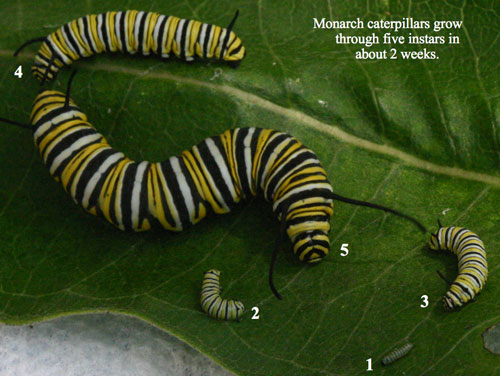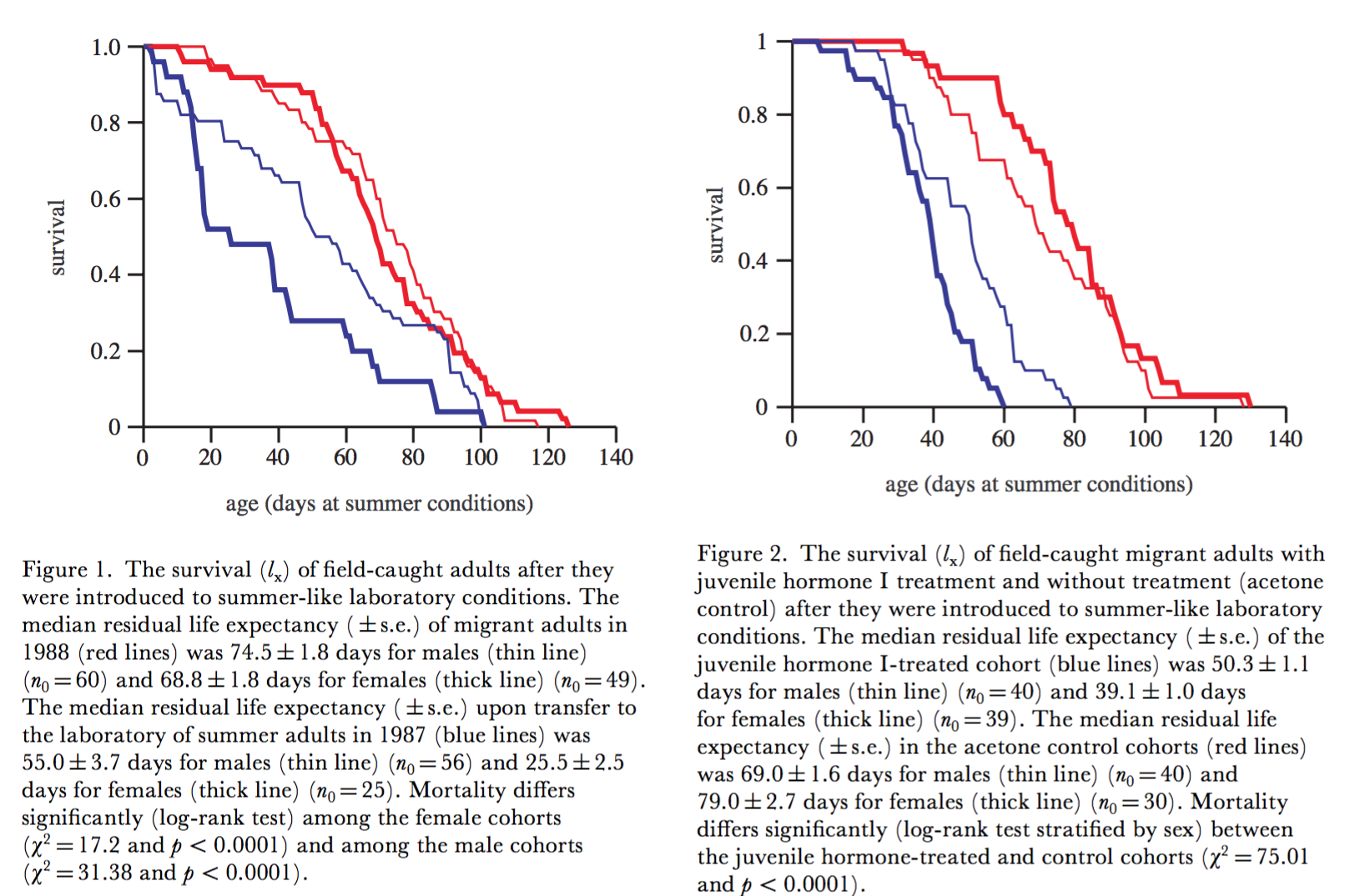The Life and Migration Cycles of Monarch Butterflies
Larval Development and Temperature Increases
 1
1
Monarch butterfly goes through five larval stages (denoted as 1st through 5th instar) before pupation and metamorphosis to become an adult butterfly.3 Lemoine, et al. studied the effect of rising temperature on the development of monarch larva. They studied the development of larval from egg to pupation in a series of six gardens out near a traditional monarch breeding site. Some of the larvae were raised in ambient temperatures whereas some had a heater, that raised the temperature by a few degrees. Their findings were that an increase in temperature decreased the amount of time spent in each stage of development, decreasing the latency to putation from an average of 12.2 days under “Ambient” conditions to 10.0 days for the “Warmed” condition. They found that warmer temperatures might facilitate larval growth in the last few instars and that a potential product of climate warming might lead to additional summer generations of butterflies. The increased temperature did not impact larval mortality rates, although later stage instars tended to be more susceptible to heat impacts. Other studies have shown that prolonged increases in temperature are detrimental to larvae, but they researchers believe that the night conditions could have possibly helped alleviate the warmer daytime temperature effects.
Monarch Phenotypic Morphs and Longevity

Once a monarch emerges from it chrysalis, it may emerge as a summer breeding morph or a migratory morph. Migratory morphs are characterized as larger with more elongated wings (see phylogeny). The Herman, et al. paper discusses the disparity in longevity between these two morphs, migratory versus summer breeders. They studied the effect of the juvenile hormone I on lifespan by a four way partition of the subject monarchs. The four groups were a control hormonal group (given juvenile hormone III, which has little/no effect on the reproductive system), and a hormonal group give juvenile hormone I. The second split was based on a control surgery called the sham-operated control and an group given an allatectomy (removal of the corpora allatum, a part of the body that is responsible for the creation of juvenile hormone I.) They found that the two control groups had equivalent lifespans averaging 78.6 ± 1.9 days for females and 67.6 ± 3.7 days for males, while the hormone I group lived only lived an average of 39.0 ± 1.7 days for females and 32.5 ± 1.8 for males. The allatectomy group however lived on average 120.3 ± 1.2 days for males and 131.2 ± 1.0 days for females. This phenomenon is called reproductive diapause and migrating morphs of monarch butterflies undergo reproductive diapause immediately as adult which is a state of repressed reproductive development. In the beginning of this phase they eat a lot of food to store as lipids in order to fly south to overwinter. These morphs live overwinter in colonies and then fly back north in the spring, when they begin to end diapause and create juvenile hormone I, and breed to begin the next cycle of monarch migration.
Citations:
- Ba Rea (2011). "5 Instars". [digital image]. Retrieved from http://blog.nwf.org/2014/09/a-visual-journey-through-the-monarch-life-cycle/
- Lemoine NP, Capdevielle JN, Parker JD. Effects of in situ climate warming on monarch caterpillar (Danaus plexippus) development. Higley L, ed. PeerJ. 2015;3:e1293. doi:10.7717/peerj.1293.
- Monarch Lab. "Monarch Life Cycle." Monarch Lab. University of Minnesota, n.d. Web. 20 Nov. 2016.
- William S. Herman, Marc Tatar (2001). Juvenile hormone regulation of longevity in the migratory monarch butterfly. Proc. R. Soc. Lond. B 2001 268 2509-2514; DOI: 10.1098/rspb.2001.1765.